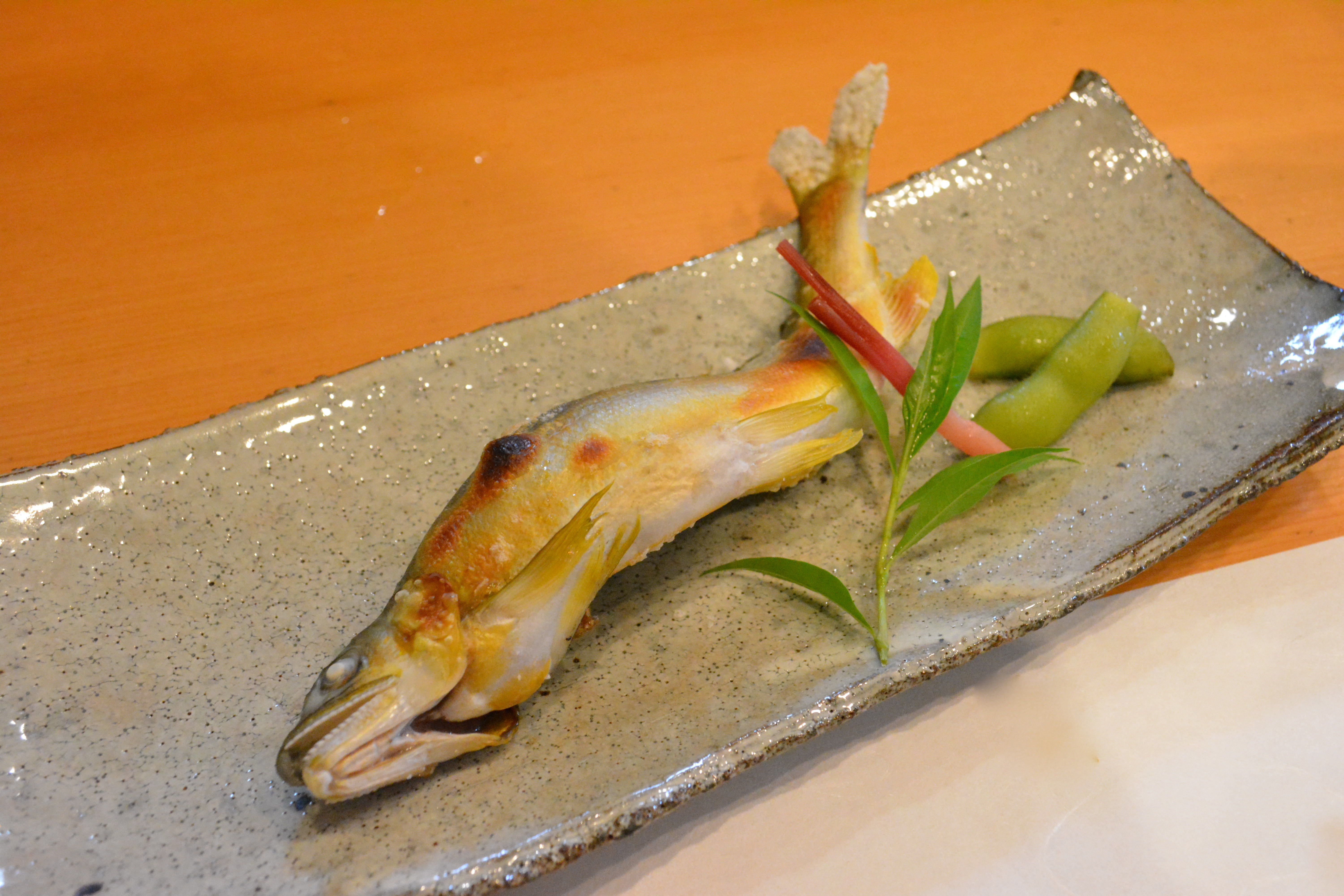Midway through lunch at Sara, a family-run restaurant in northern Kyoto, I started to suspect that the chefs subscribed to a philosophy of daintiness. The food was as pretty as it was good to eat, but the portions were decidedly petit.
This was especially so with the hassun, an appetizer plate that typically combines various seasonal ingredients. Chefs often try to outdo each other in the presentation of this dish, often clearing entire forests in their efforts to foliate the dish. But Koji Hayashi, the chef and proprietor at Sara, takes a more refined and simple approach, he uses only a few Japanese maple leaves as decoration (or distraction) on a slender white narrow plate. At first I thought this seasonal dish contained a tiny portion of quiche, but it turned out to be a bite-size piece of kamo nasu, a Kyoto variety of eggplant, covered in miso paste. It was a sweet little teaser. The eggplant was accompanied by nidako (simmered octopus) and an unusual variation of sushi: tai (sea bream) on vinegared rice, wrapped in flavorful shiso (perilla) leaves. The accompanying sweet potato could have been simmered a little more, however. In a small dish atop the maple leaves was a serving of mozuku, a type of briny edible seaweed that your mother might say you should eat because it's good for you.
Successive dishes included a modest nabe hot pot with sea bream, nameko mushrooms and tofu, followed by a small serving of Japanese whiting tempura and melt-in-the-mouth sashimi of squid and Meiji maguro (baby bluefin tuna) — the tuna's subtle toughness was a nice contrast to the squid.


















With your current subscription plan you can comment on stories. However, before writing your first comment, please create a display name in the Profile section of your subscriber account page.